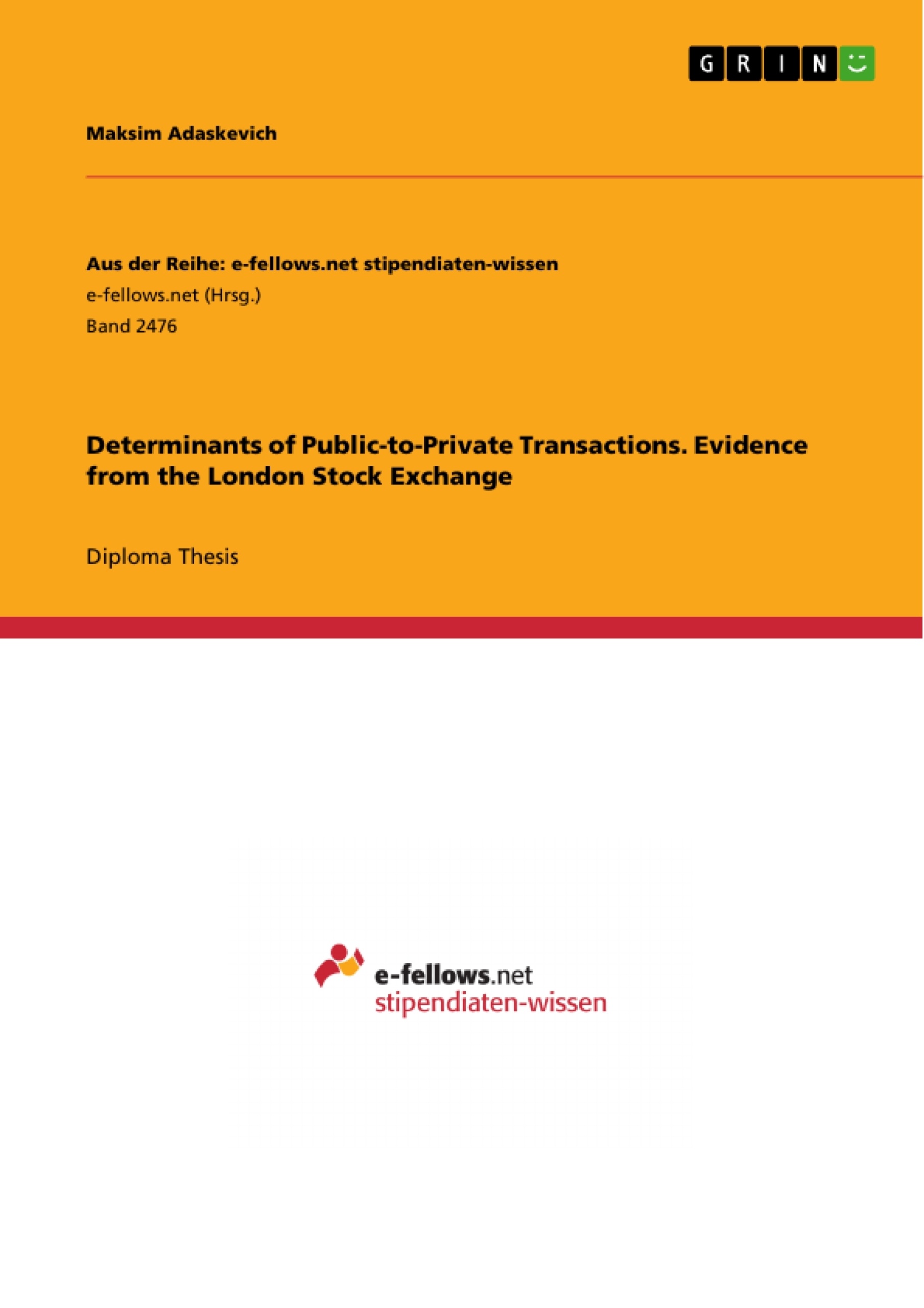If we take a look at some of the most notable buyouts that took place in the UK in the last decade, the evidence on the relationship between analyst following, insider ownership and the probability of being taken private is mixed. For example, in 2007 a US private equity firm Kohlberg Kravis Roberts (KKR) acquired a Swiss pharmaceutical company Alliance Boots, which was at listed on the London Stock Exchange at the time of the deal. Alliance Boots had almost no insider ownership at that time (around one-hundredth of a percent) and had relatively few analysts following it considering its size. Conversely, in 2009 the management of Regent Inns, an owner of chains of bars and restaurants, stood ready to buy out the remaining stake in the troubled company, whilst already owning more than 50% of it.
Notwithstanding the fact that Regent Inns was in shaky financial conditioned and majority management-owned, it was still followed by quite a lot of analysts (relative to its modest size). However, no definite conclusions can be made based on those isolated cases and it would be of interest to establish the relationship between analyst following, insider ownership and the probability of being bought out for UK firms by conducting an empirical study on the determinants of the probability of public-to-private deals. In our study we will also pay attention to other factors previously identified as important in the literature on this topic.
This leads us naturally to our research question and research goal. In this study we answer the following research question ―Which factors are related to the probability of a company being taken private? The research goal is to establish the relationship between analyst following, insider ownership and the probability of it being bought out. In order to meet the research goal the following objectives were set:
(1) Conduct a critical review of relevant literature on the topic;
(2) Classify the determinants of public-to-private transactions;
(3) Conduct an empirical study aimed at revealing the determinants of public-to-private transactions in the UK;
(4) Analyse the results, make conclusions and suggest possible implications for investors and the stock exchange.
Table of Contents
INTRODUCTION
CHAPTER 1. THEORETICAL BACKGROUND
1.1. Public-to-Private Transactions: Literature Review
1.2. Determinants of Public-to-Private Transactions: Classification
1.3. Case Studies: Buyouts of Alliance Boots and Regent Inns
1.4. Hypotheses Formulation
CHAPTER 2. EMPIRICAL STUDY
2.1. Research Design
2.2. Sampling and Data Collection
2.3. Empirical Results & Discussion
CONCLUSIONS
LIST OF REFERENCES
- Citar trabajo
- Maksim Adaskevich (Autor), 2015, Determinants of Public-to-Private Transactions. Evidence from the London Stock Exchange, Múnich, GRIN Verlag, https://www.grin.com/document/370058
-

-

-

-
¡Carge sus propios textos! Gane dinero y un iPhone X. -

-
¡Carge sus propios textos! Gane dinero y un iPhone X. -

-
¡Carge sus propios textos! Gane dinero y un iPhone X. -

-
¡Carge sus propios textos! Gane dinero y un iPhone X. -

-
¡Carge sus propios textos! Gane dinero y un iPhone X. -

-
¡Carge sus propios textos! Gane dinero y un iPhone X. -

-
¡Carge sus propios textos! Gane dinero y un iPhone X. -

-
¡Carge sus propios textos! Gane dinero y un iPhone X. -

-
¡Carge sus propios textos! Gane dinero y un iPhone X. -

-
¡Carge sus propios textos! Gane dinero y un iPhone X.

